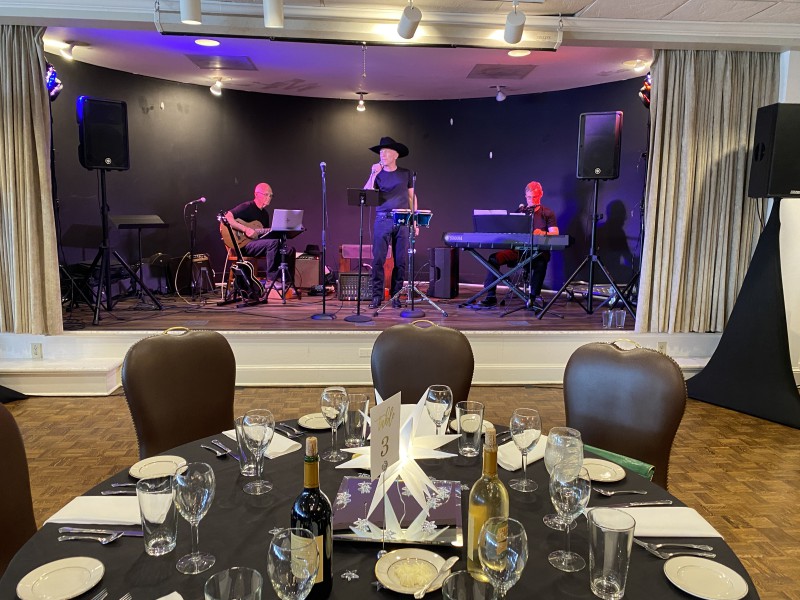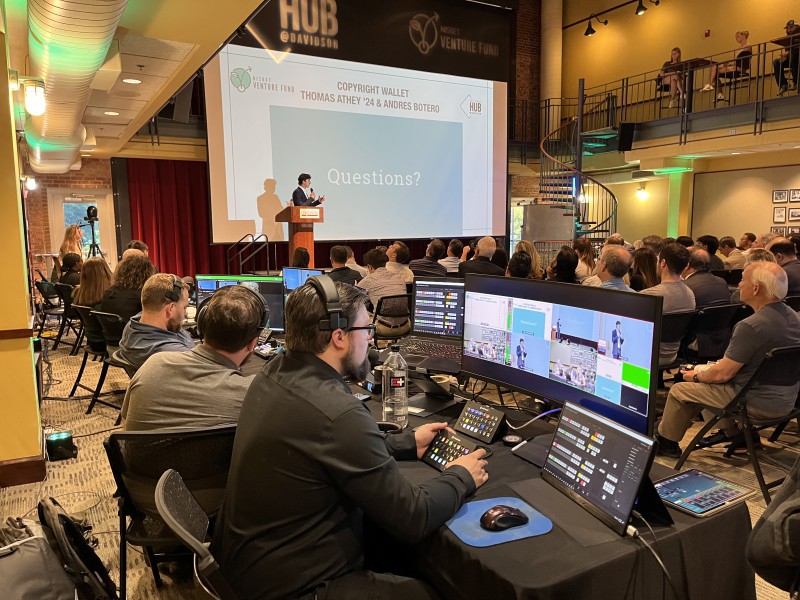Elevating event success: the critical role of early AV planning
The role of audio-visual (AV) technology has become increasingly pivotal in creating memorable and impactful experiences. Integrating high-quality AV elements can elevate the event to new heights, whether it’s a corporate conference, a non-profit gala, or a community celebration. However, the success of these AV enhancements hinges on more than just the technology itself; it requires careful planning and coordination from the outset. This blog post will explore the critical importance of early AV planning in event management, highlighting the transformative power of AV in enhancing event experiences, the benefits of collaboration between event planners and AV teams, and providing a practical checklist to guide planners in their AV considerations. By understanding and embracing these principles, event staff can unlock the full potential of AV technology to create truly unforgettable events.

The role of AV in enhancing event experiences
Audio-visual (AV) technology has become an indispensable tool for event planners seeking to create memorable experiences. AV’s transformative power lies in its ability to engage the senses, captivate audiences, and effectively convey messages. From stunning visual displays to crystal-clear audio, the right AV setup can elevate any type of live event from ordinary to extraordinary.
One key aspect of AV that enhances event experiences is its ability to create immersive environments. Using large screens, projection mapping, and lighting effects, AV technology can transport attendees to different worlds, whether a virtual landscape for a product launch or a thematic backdrop for a gala dinner. This immersion holds the audience’s attention and strengthens the emotional connection to the function’s content.
Moreover, AV plays a crucial role in facilitating communication and interaction. High-quality sound systems ensure that speakers are heard, regardless of the size of the event venue, while video conferencing tools enable remote participation, expanding the event’s reach. Interactive elements such as live polling and social media integration further encourage audience engagement, making the gathering more interactive and inclusive.
The impact of AV on event experiences is also evident in its ability to amplify the emotional impact of presentations and performances. Music, sound effects, and visual storytelling can all be enhanced through AV technology, creating a more powerful and resonant experience for attendees. AV elements add depth and dimension to the occasion, whether it’s the stirring soundtrack of a keynote speech or the vibrant visuals of a live concert.

The importance of early AV planning
The success of any event hinges on meticulous planning, and when it comes to integrating audio-visual (AV) elements, early planning is paramount. Early AV planning ensures a smoother program execution, as it allows for a comprehensive understanding of the venue’s capabilities, the event’s technical requirements, and the overall vision for the experience. By addressing AV needs at the beginning of the planning process, the event team can avoid common pitfalls and ensure a seamless integration of AV solutions.
One key benefit of early AV planning is identifying potential challenges and addressing them proactively. This could include logistical issues such as power supply, equipment placement, and acoustics, which are crucial for optimal AV performance. Early planning also allows for exploring creative AV solutions, such as custom lighting designs or interactive displays, that can enhance the occasion. By considering these elements in advance, planners can ensure that the AV setup aligns with the event’s theme and objectives.
Moreover, early AV planning allows for better budget management. AV equipment and services can represent a significant portion of an budget, and early planning helps avoid last-minute expenses arising from rushed decisions or unforeseen technical requirements. By allocating resources wisely and securing equipment and services well in advance, planners can optimize their budgets and allocate funds to other important aspects of the gathering.
Another advantage of early AV planning is the opportunity for collaboration between the event planning team and AV professionals. This collaboration is essential for translating the function’s vision into a technical reality. AV experts can provide valuable insights into the latest technologies and trends, helping planners make informed decisions that enhance the overall event experience. Early engagement with AV professionals also ensures that they clearly understand the event goals, allowing them to tailor their services accordingly.

Collaboration between event planners and AV teams
Collaboration between event planners and AV teams is a cornerstone of successful event execution. This partnership ensures that the event’s vision is seamlessly translated into an audio-visual reality, creating an engaging and impactful experience for attendees. This collaborative approach has numerous advantages, with effective communication and shared goals at the heart of its success.
One key benefit of collaboration is the pooling of expertise. Event planners deeply understand the event’s objectives and audience, while AV professionals possess technical knowledge and experience with the latest technologies. By working together, they can develop creative solutions aligning with the gathering’s theme and goals while ensuring technical feasibility and reliability.
Effective communication is crucial in this partnership. Regular meetings and clear communication channels ensure everyone is on the same page regarding the timeline, budget, and technical requirements. This open dialogue allows for the early identification of potential issues and the development of contingency plans, reducing the likelihood of last-minute surprises.
Moreover, collaboration fosters innovation. AV teams can offer insights into new technologies and trends that can elevate the event experience. In contrast, event managers can provide context on how these innovations can enhance the narrative and engage the audience. Together, they can push the boundaries of what’s possible, creating truly memorable experiences.

Checklist for event planners
Event planning checklists help organize everything into a single, easy-to-use document. Here is our recommended event planning checklist for you to get started:
- Define AV Objectives: Clearly outline what you want to achieve with AV, such as enhancing presentations, creating immersive experiences, or facilitating interaction.
- Assess Venue Capabilities: Determine the AV capabilities of your chosen venue, including power sources, acoustics, and space for equipment.
- Consult AV Professionals Early: Engage with AV experts early in planning to discuss your objectives and explore creative solutions.
- Develop a Technical Plan: Create a detailed plan that includes all technical requirements, such as sound systems, lighting, and video equipment.
- Allocate Budget for AV: Set aside a realistic budget for AV needs, considering equipment rental, professional services, and any additional costs.
- Conduct Site Visits with AV Team: Visit the venue with your AV management folks to assess logistics and plan equipment placement.
- Plan for Contingencies: Develop backup plans for potential technical issues, such as equipment failure or power outages.
- Schedule Rehearsals: Allow time for rehearsals to test AV equipment and make any necessary adjustments.
- Communicate with Stakeholders: Keep all stakeholders, including speakers and performers, informed about AV arrangements and any specific requirements.
- Review and Adjust: Afterwards, review the AV execution with your team and note any areas for improvement for future events.
Partnership in planning
Early AV planning and collaboration between event planners and AV professionals are the keys to elevating event success. Event planners can unlock the full potential of audio-visual technology to create truly unforgettable experiences by prioritizing AV considerations from the outset and fostering a partnership with AV experts. For those seeking tailored AV solutions and seamless integration, RYGID AV is here to support you. Reach out to us early in your planning process for your upcoming events to ensure your event shines in the best possible light.



